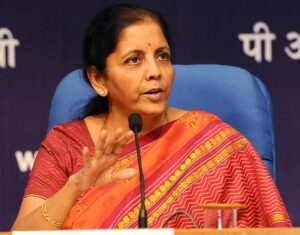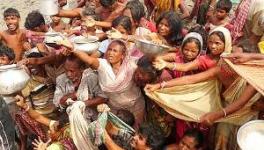The Economic Costs of Not Vaccinating Everyone
At the time of writing this piece, heated arguments are taking place about the total cost of vaccination; who will pay; and how much they need to pay. The union government has made it clear that it will not bear the entire cost of vaccinating every adult in the country. At best, it may cover 50% of the adult population. The rest of the cost should be borne by state governments or individuals.
Perhaps a different question is more pertinent here: What is the cost – economic and human – to the country if everyone is not vaccinated quickly? The assumption here is that only a mass vaccination programme that covers almost all adults could bring life back to some semblance of normalcy as it was before the pandemic. Until this happens, full economic activity will not be possible.
Once you look at answering the second question, it becomes clear that the cost of not vaccinating the entire population quickly will be far higher than bearing the entire cost of vaccination.
The answer to the first question is easy. We know that the union government has negotiated hard with the vaccine firms to get a price of Rs 150 per dose. We know that our total population is around 135 crore and our adult population over18 is roughly 90 crore. We know each person requires two doses and therefore the total vaccine cost for one person comes to Rs 300 at the price the union government is paying. We also know it had allocated Rs 35,000 crore in its Budget this year for the vaccination exercise. Those details tell us that at this price, the union government would spend just Rs 27,000 crore – or Rs 8000 crore less than what it has allocated. Add a couple of thousand crore for logistics, administration and wastage and it would still be less than the budgeted amount.
If the union government only vaccinates half the 90 crore adult population, its costs will also halve. For the other half, the states will pay much more than what the union government is paying because they are buying at a higher price.
With that out of the way, let us try and get the answer to the second question. It is less easy to quantify precisely but we get a good idea from the slowdown projections as we tackle the second wave. Several indices of activity are already showing the effects. The unemployment rate is climbing up while the labour force participation is coming down. Other indicators of industrial activity like power demand and capacity utilisation are also not looking good.
And while the union government has emphasized that a country-wide lockdown is the last option, various states have started local level restrictions. Three important business centres – Mumbai, Delhi NCR and Bengaluru – have applied restrictions for differing periods. Many critical sectors employing hundreds of thousands of people – like multiplexes, movies, restaurants, gymnasiums and airlines have come to a standstill or just limping along. Meanwhile, worried by the local level lockdowns, migrant labour is heading home.
In the first wave, the sudden lockdown saw the economy contract massively as everything came to a standstill. As economic activity resumed slowly towards the end of the year, pent up demand and other factors came into play but were not enough to make up for the contraction of two quarters. For the financial year of 2020-21, the Central Statistical Organisation has projected a GDP contraction of 8% of the previous year.

In the new financial year, analysts and forecasters hoped that the economic activity would accelerate. They projected that the Indian economy would grow between 10.5% to up to 12% in the full year. That would put India back to where it was at the end of FY2019-20. Now all are revising their growth forecasts downwards. The reductions are in the range of 1-1.5% from their earlier projections. And these are assuming that the second wave of Covid comes under control soon and there is no further disruption.
Projecting economic growth is not an exact science. You need to factor in many things. One of the things that, for example, will show up only much later, is the drop in household savings and the rise in personal indebtedness in the poor and the middle class as families struggle with healthcare costs of Covid. This, in turn, will influence consumption trends, labour force availability, and other indicators over the medium and long term.
The human costs of Covid are enormous. According to official figures we have lost over 200,000 people to the virus, and many others have been left with long term health problems. But given the mismatch between the number of official Covid deaths in the second wave with the daily burden at crematoriums, observers say the real death toll from the disease is anywhere between 5X to 10 X daily from the official numbers.
Even if the government chose to ignore the human cost, it should not ignore the economic cost. It had allocated for vaccination is just over 1% of the total expenditure budget and roughly 0.16% Budget estimates of the current year’s GDP.
The cost of non-vaccination would be many times more if GDP growth drops by 1% or 1.5% or even more because of successive waves. It does not seem to be a difficult choice to make.
Prosenjit Datta is former editor of Businessworld and Business Today magazines. This has been reproduced from his website prosaicview.com with his permission. The views are personal.
Get the latest reports & analysis with people's perspective on Protests, movements & deep analytical videos, discussions of the current affairs in your Telegram app. Subscribe to NewsClick's Telegram channel & get Real-Time updates on stories, as they get published on our website.





















